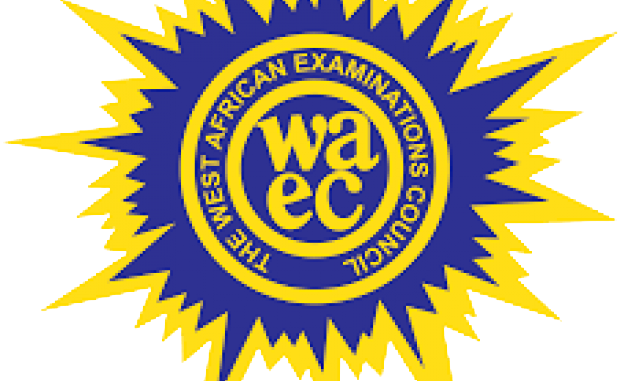
WAEC 2022 CHEMISTRY PRACTICAL ANSWERS-EXAMKING.NET
°°°°°°°°°°°°°°°°°°°°°°°°°°°°°°°°°°°°°°°°
CLICK HERE TO JOIN OUR TELEGRAM CHANNEL FOR ALL 2022 EXAM ANSWERS FOR FREE
Tuesday, 14th June, 2022
Chemistry 3 (Practical) (Alternative A)
09:30am – 11:30am (1st Set)
Chemistry 3 (Practical) (Alternative A)
12:00noon – 2:00pm (2nd Set)
°°°°°°°°°°°°°°°°°°°°
Chemistry-Practical-Answers-Examking.Net
TAKE NOTE:
For question 1
Use your school’s ENDPOINT and use it wherever you see 24.10cm³….and calculate with it
(3a)
Carbon (iv) oxide turns like water milky white while sulphur (iv) oxide does not
(3bi)
(I) H2 ; downward displacement of water
(II) NH3; downward displacement of air
(III) HCL; upward displacement of air
(3bii)
(I) Hydrogen gas(H2) is collected by the downward displacement of water because It is insoluble in water and It form an explosive mixture with air.
(II) Ammonia gas(NH3) is collected by downward displacement of air because it is lighter than air
(III) HCl gas is collected by upward displacement of air because it is 1.28 times heavier than air.
(3c)
(i) Distillation
(ii) Filtration followed by evaporation to dryness
(3d)
This is because KCl react with NaHCO₃ to form two salts
°°°°°°°°°°°°°°°°°°°°°°°°°°°°°°°°°
°°°°°°°°°°°°°°°°°°°°°°°°°°°°°°°°°°
(2a)
[TABULATE]
=TEST=
C + Distilled water
=OBSERVATION=
It dissolves completely to give a light green solution.
=INFERENCE=
Soluble salt.
(2ai)
=TEST=
Solution C + NaOH in drops and in excess + Heat gently
=OBSERVATION=
A dirty green precipitate is formed which remains insoluble in excess.
Effervescence occurs in which a colourless gas with a pungent smell which turns red litmus blue is given off.
=INFERENCE=
Fe²⁺ is present.
NH₃ gas form.
NH₄⁺ is present.
(2aii)
=TEST=
Solution + BaCl₂ + dilute HCL in excess
=OBSERVATION=
A white precipitate is formed.
The white precipitate remains insoluble and gives a white dense.
=INFERENCE=
SO₄²⁻, CO₃²⁻, SO₃²⁻, is present.
SO₄²⁻ confirmed.
(2b)
Cations → Fe²⁺ and NH₄⁺
Anions → SO₄²⁻
(2a)

°°°°°°°°°°°°°°°°°°°°°°°°°°°°°°°°°
°°°°°°°°°°°°°°°°°°°°°°°°°°°°°°°°°°
(1a)
Volume of pipette used, VA = 25.0cm³
[TABULATE]
Burette Reading | Rough titre | 1st titre | 2nd titre |
Final Burette reading (cm³) | 25.60 | 32.80 | 26.40
Initial Burette reading (cm³) | 1.20 | 8.70 | 2.30
Volume of Na₂S₂O₃ used | 24.40 | 24.10 | 24.10
Average burette reading = (24.10 + 24.10)/2
Average volume of Na₂S₂O₃ used = 24.10cm³
VB = 24.10cm³
(1bi)
Given: CB = 0.1mol/dm³
VB = 24.10cm³
VA = 25.0cm³
CA =?
From equation nA/nB = 1/2
.: Using (CABA)/CBVB = (nA)/nB
(CA x 25)/(0.1×24.10) = 1/2
CA = (0.1×24.10)/(25×2)
CA = 0.0482mol/dm³
.: Concentration of iodine in A = 0.0482mol/dm³
(1bii)
Mass in gramms of iodine in 1dm³ of A = Molarity × Molar mass of iodine
= 0.0482×127(2)
= 12.2428g/dm³

°°°°°°°°°°°°°°°°°°°°°°°°°°°°°°°°°°°°°°°°
Chemistry-Practical-Questions





CLICK HERE TO JOIN OUR TELEGRAM CHANNEL FOR ALL 2022 EXAM ANSWERS FOR FREE
°°°°°°°°°°°°°°°°°°°°°°°°°°°°°°°°°°°°°°°°
Completed!!!
°°°°°°°°°°°°°°°°°°°°°°°°°°°°°°°°°°°°°°°°
Is a nice update
Nice one
Its a very kool update.
waec
I love this site
08106134051
Maybe we can get together
336